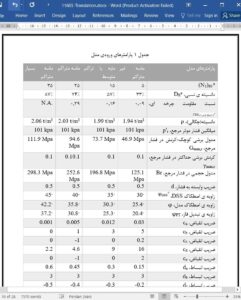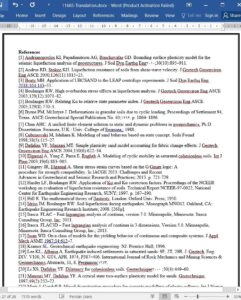Abstract
A constitutive soil model that was originally developed to model liquefaction and cyclic mobility has been updated to comply with the established guidelines on the dependence of liquefaction triggering to the number of loading cycles, effective overburden stress (Kσ), and static shear stress (Kα). The model has been improved with new flow rules to better capture contraction and dilation in sands and has been implemented as PDMY03 in different computational platforms such as OpenSees finite-element, and FLAC and FLAC3D finite-difference frameworks. This paper presents the new modified framework of analysis and describes a guideline to calibrate the input parameters of the updated model to capture liquefaction triggering and post-liquefaction cyclic mobility and the accumulation of plastic shear strain. Different sets of model input parameters are provided for sands with different relative densities. Model responses are examined under different loading conditions for a single element.
1. Introduction
Soil liquefaction has been shown to be a major cause of damage to structures in past earthquakes. Several constitutive models have been developed to capture various aspects of flow liquefaction and cyclic mobility such as Manzari and Dafalias [21], Cubrinovski and Ishihara [8], Li and Dafalias [20], Byrne and McIntyre [6], and Papadimitriou et al. [25] to name a few. Simulating soil liquefaction using numerical models offers several challenges including: (a) reasonably capturing triggering of liquefaction or the rate of pore-water-pressure (PWP) generation for sands with different relative densities under various levels of shear stress, effective overburden stress and static shear stress, and (b) post-liquefaction cycle-by-cycle accumulation of shear and volumetric strains.
5. Conclusions
The pressure-dependent multi-yield surface constitutive model was originally developed to capture cyclic mobility and post-liquefaction accumulation of shear strains. This paper presents new updates to the constitutive model to capture the effects of various parameters on triggering of liquefaction including the effects of the number of loading cycles, the effective overburden stress (Kσ effects), and the initial static shear stress (Kα effects). The model has been improved with new flow rules to better simulate contraction and dilation induced by shear strains in soils, thereby more accurate modeling of liquefaction in sandy soils. The model has been implemented in 2D and 3D numerical platforms in OpenSees finite-element, and FLAC and FLAC3D finite-difference frameworks.











